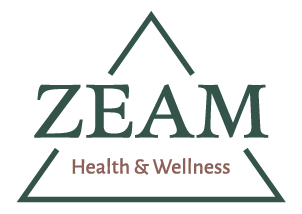Neurofeedback, a cutting-edge therapy rooted in the principles of biofeedback, stands at the forefront of mental health innovation. This non-invasive technique leverages real-time displays of brain activity, aiming to teach self-regulation of brain function. By monitoring brain waves, individuals learn to alter their own brain activity to improve mental health conditions such as anxiety and ADHD. Neurofeedback’s promise lies in its ability to empower individuals, offering a pathway to healing from within. As mental health challenges continue to rise, neurofeedback emerges as a beacon of hope by complementing traditional therapeutic methods with its unique approach to enhancing mental well-being. Through this blog, we delve into the science, applications, and transformative potential of neurofeedback therapy, illuminating its role as a pivotal tool in the journey toward mental resilience and health.
Grasping the Concept of Neurofeedback
At the heart of neurofeedback therapy lies the fundamental principle of operant conditioning, a method through which individuals learn to modify their behavior in response to consequences. By utilizing EEG technology, neurofeedback tracks brainwave patterns, offering real-time feedback to the user. This feedback, often presented through visual or auditory signals, guides individuals to achieve specific brainwave states associated with relaxation, focus, or other desired mental states.
The distinction between traditional and direct neurofeedback becomes crucial in understanding the therapy’s applications. Traditional neurofeedback focuses on training individuals to control specific brainwave frequencies over multiple sessions, aiming for long-term cognitive improvements. Conversely, direct neurofeedback provides immediate signals to the brain, prompting quick adjustments without conscious effort from the individual. This direct approach is heralded for its potential to address a wide range of psychological conditions by resetting neural patterns to a more optimal state.
By bridging the gap between neuroscience and therapeutic practice, neurofeedback offers a personalized pathway to mental wellness, adapting to the unique neural landscape of each individual. Its science-based approach underpins its effectiveness in enhancing cognitive function, emotional regulation, and overall mental health.
Application of Neurofeedback in Mental Health
Neurofeedback for Anxiety
Neurofeedback therapy offers a promising approach to managing anxiety. By training individuals to control and modify their brainwave patterns, neurofeedback helps to reduce anxiety levels, enhance relaxation, and improve overall emotional balance. This technique empowers patients to actively participate in their healing process, leading to sustained improvements in their mental health.
Neurofeedback for ADHD
Attention Deficit Hyperactivity Disorder (ADHD) poses significant challenges in concentration and behavior regulation. Neurofeedback therapy addresses these issues by encouraging the development of brainwave patterns that promote focus and calmness. Patients learn to increase brain activity associated with attention, reducing ADHD symptoms and improving their quality of life.
Beyond Anxiety and ADHD
While neurofeedback is particularly noted for its effectiveness in treating anxiety and ADHD, its application extends to depression, PTSD, and other mental health conditions. By adjusting brainwave frequencies, neurofeedback aids in alleviating symptoms of depression, offering a non-pharmaceutical approach to mental health care.
Neurofeedback therapy in Sacramento is an exceptional and versatile approach within the field of mental health treatment. It serves as a powerful tool, providing hope and improved outcomes for individuals dealing with various psychological challenges.
Neurofeedback as a Complementary Treatment
Neurofeedback therapy shines not only as a standalone treatment but also as a significant adjunct to traditional therapy methods. It enhances the therapeutic process by providing a tangible, science-backed approach to mental health improvement. For conditions like anxiety, ADHD, and depression, neurofeedback works alongside medication, cognitive-behavioral therapy (CBT), and other treatment modalities to offer a holistic path to recovery. This synergy between neurofeedback and traditional therapy methods fosters a comprehensive treatment plan, allowing individuals to achieve better outcomes. By integrating neurofeedback into the broader spectrum of mental health care, practitioners can offer a more personalized and effective treatment strategy, tailoring interventions to meet the unique needs of each patient.
Innovations in Neurofeedback Technology
The field of neurofeedback has witnessed significant technological advancements, revolutionizing the way mental health interventions are delivered and experienced. These innovations are not only making neurofeedback more effective but also more accessible to a broader audience. Here’s a closer look at some of the key developments in neurofeedback technology:
- Enhanced EEG Hardware: Modern EEG (electroencephalogram) devices have become more sophisticated, offering higher-resolution brainwave data with greater accuracy and reliability. These enhancements allow for a more detailed analysis of brain activity, enabling neurofeedback protocols to be fine-tuned with unprecedented precision. Portable and wearable EEG devices have also made neurofeedback accessible outside of clinical settings, allowing for regular, home-based sessions.
- Sophisticated Software Algorithms: Advances in software for neurofeedback have greatly expanded its capabilities. Algorithms can now process EEG data in real time, providing immediate feedback to the user. This instant feedback is crucial for effective neurofeedback training, as it allows individuals to adjust their brainwave activity more efficiently. Furthermore, these algorithms can isolate specific brainwave patterns related to various mental health conditions, which enables targeted interventions.
- Cloud-Based Data Analysis and Storage: The integration of cloud computing with neurofeedback technology has facilitated the storage and analysis of vast amounts of EEG data. This allows for long-term tracking of an individual’s progress and the aggregation of data from many users to improve neurofeedback protocols through big data analysis. Cloud-based platforms also support remote sessions, where practitioners can monitor and adjust neurofeedback sessions in real time, even when the patient is at home.
These innovations in neurofeedback technology are not just enhancing the efficacy and accessibility of neurofeedback—they are also changing the landscape of mental health treatment. As these technologies continue to evolve, they promise to offer even more sophisticated, personalized, and effective neurofeedback interventions, making an impactful contribution to the field of mental health.
Embrace Your Journey to Wellness With Zeam Health & Wellness
By exploring the transformative potential of neurofeedback in enhancing mental health, it’s clear that taking the first step toward healing is within your reach. At Zeam Health & Wellness, we invite you to embark on this journey with us. Whether you’re seeking to improve your mental well-being through neurofeedback or exploring other holistic health services, our team is dedicated to supporting your path to recovery and resilience. Join us at Zeam Health & Wellness, and let’s work together toward a brighter, healthier future.




